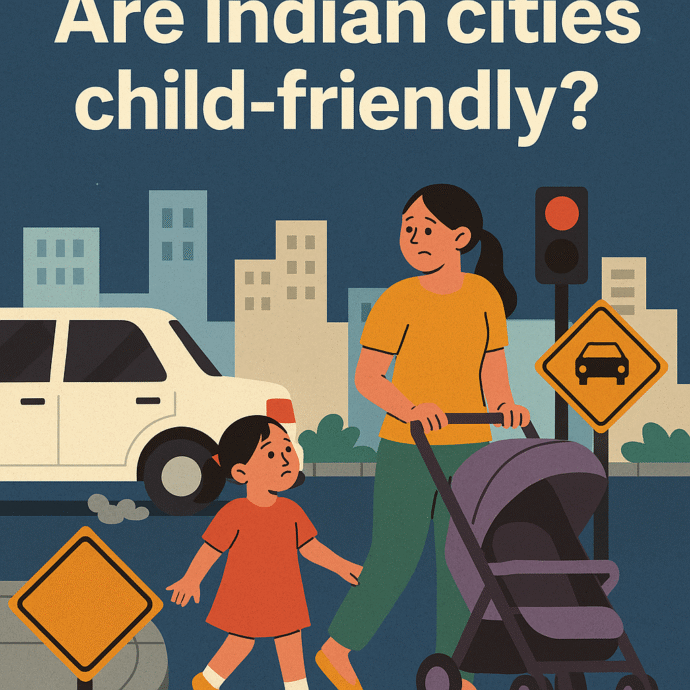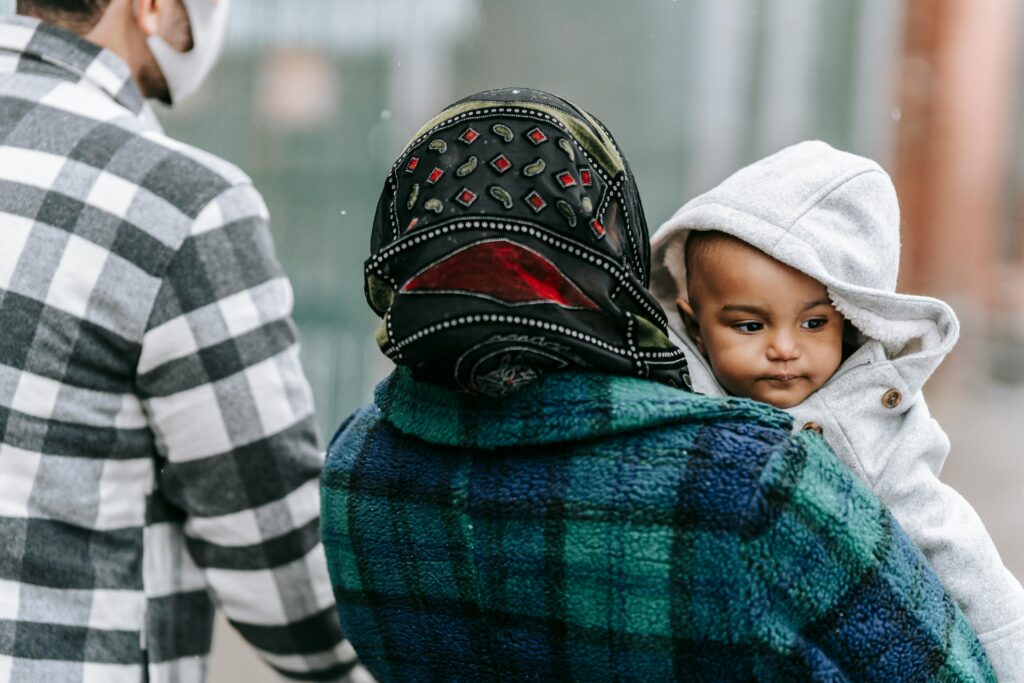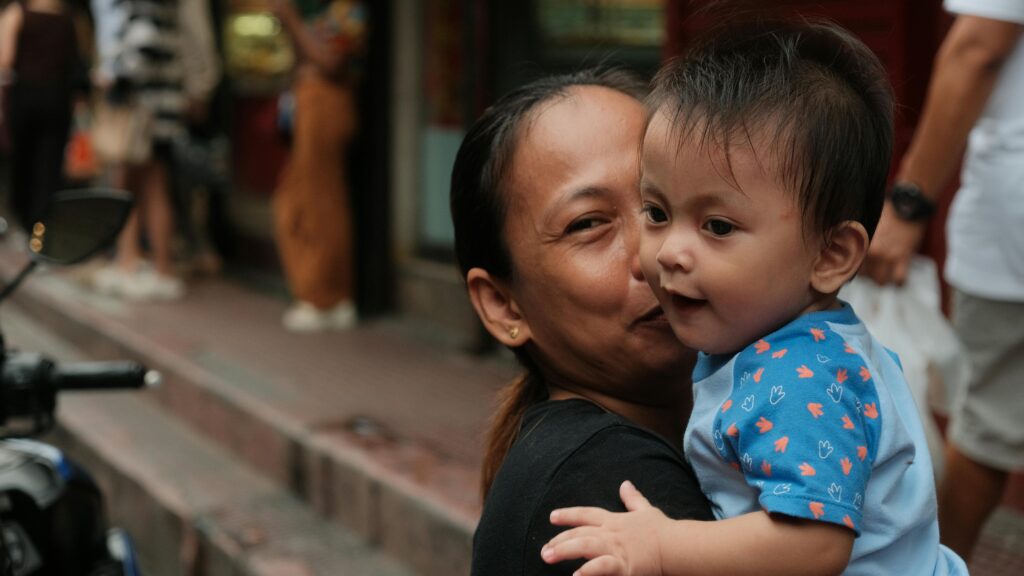childhood vs concrete: why indian cities are failing young families

If cities reflect a civilisation’s values, what do Indian cities say about us? That chaos trumps care. That concrete matters more than comfort. And that car horns count for more than children.
Recently, the team at Kolab Studios posed a seemingly naive question: Is raising a child in an Indian city even remotely manageable? The answers—shared by new parents navigating life in Ahmedabad, Mumbai, and Vadodara—weren’t heartening. Most described parenting in public spaces as “survivable.” And that’s not something to be proud of.
Urban Design vs. Baby Steps
Want to take your infant for a stroll? You’ll need more than a stroller—try a trekking kit. Between cracked pavements, absent ramps, traffic chaos, and zero shade, every outing turns into an obstacle course.
As one Ahmedabad parent put it:
“No stroller-friendly roads or ramps, broken footpaths, and no shade. I manage somehow.”
This is urban parenting in India, a sport in survival, not a celebration of life.
Diapers, Dust, and Dignity
Need to change a diaper or breastfeed while out? Good luck. Most Indian cities seem to assume that caregivers don’t exist. No parent in our survey could recall a public space with proper feeding or changing facilities. Malls and airports became emergency shelters. Others survived thanks to strangers who “arranged a room somewhere.”

One exception? Kerala. Some bus stops now include feeding rooms. That’s what compassion-driven design looks like.
Kerala’s Compassion-Driven Design: Feeding Facilities in Public Transit Spaces
In a move rare among Indian transit systems, Kochi Metro Rail Ltd. (KMRL) introduced breastfeeding pods at four of its metro stations, including Aluva and Ernakulam. These discrete, fibre-reinforced plastic cubicles provide privacy and comfort for nursing mothers, with features like seating, lighting, ventilation, hand sanitiser, and charging points. Designed and installed in partnership with the startup ‘I Love 9 Months’, these pods aim to make breastfeeding in public spaces both dignified and convenient
Though most facilities are concentrated around metro and railway stations, Kerala has issued directives under its Shishusauhrida / Balsauhrida scheme to set up breastfeeding rooms—referred to as ‘feeding centres’—in all major public places, including bus stands, hospitals, and government institutions. While implementation is still emerging, this marks a meaningful shift toward acknowledging caregivers’ needs in public design.
What this demonstrates isn’t just infrastructure—it’s compassion-driven design. Unlike infrastructure-heavy cities indifferent to caregiver needs, Kerala shows how small, thoughtful spaces within public systems uphold dignity and inclusivity.
Nature Is Now a Screensaver
Parents long for nature-friendly play zones and shaded spaces. But in today’s India, children are more likely to meet trees on YouTube than under one. The banyan-shaded childhood of past generations? Replaced by glass facades, fuel fumes, and fenced-off lawns.
The Bigger Problem: Systemic Exclusion
It’s not just about kids. Indian cities are hostile to anyone not in a car.
Elderly, disabled, caregiving adults—all face a daily battle. Wide footpaths, ramps, benches, breathable public spaces? Nonexistent unless you live in a gated enclave. Urban design has become a filter of exclusion.
Other Cities Show What’s Possible
Parents repeatedly mentioned Singapore, Zurich, and Dubai. Cities where ramps don’t need divine intervention. Where walking is the default, not the risk. Where caregiving is built into urban planning—not tacked on as an afterthought.
These cities understand something radical:
If you design for the most vulnerable, you create a city that works for everyone.
What Can Indian Cities Do? Start With the Basics
Here’s what respondents—and global best practices—recommend:

- Stroller-friendly footpaths with ramps, shade, and continuity.
- Clean, accessible toilets with changing and breastfeeding facilities.
- Local green spaces with benches, trees, and child-safe play zones.
- Urban policies that recognise caregiving as civic work.
Child-Friendly Cities = Healthy, Inclusive Cities
Designing for children isn’t soft planning. It’s smart urbanism.
A footpath that works for a stroller works for an elderly person. A shaded bench helps both a breastfeeding mother and a tired commuter. A park within walking distance lifts mental health across all age groups.
If we get it right for children, we get it right for everyone. Until then, parenting in Indian cities will remain a tragicomic dance—strollers moonlighting as off-road vehicles, and families forced to trade comfort for survival.
Are you a parent, caregiver, planner, or designer working on these issues?
We want to hear from you. 📧 Write to us at urbanvoicesin@gmail.com Or tag us on Instagram @urbanvoices.in with your story or photos.
